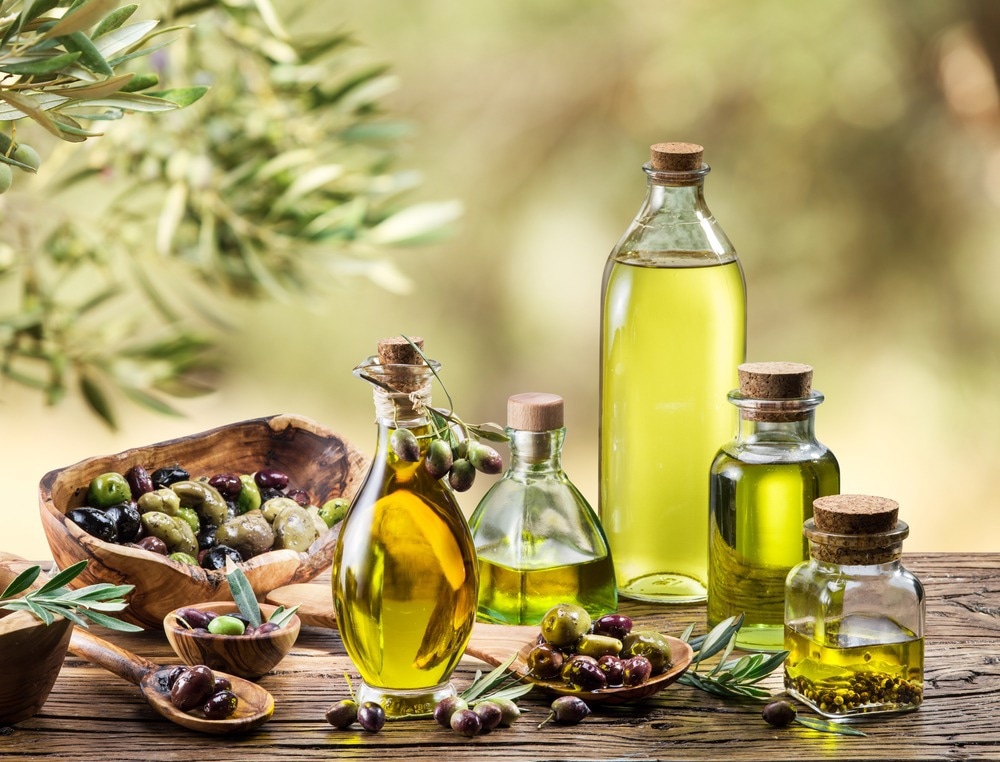 By Taha KhanReviewed by Sophia CoveneyNov 1 2022
By Taha KhanReviewed by Sophia CoveneyNov 1 2022
In an article published in the journal Foods, researchers tested a CNN algorithm to assess its potential for olive classification for industrial purposes, specifically its potential integration and sorting performance evaluation.

Study: Olive Fruit Selection through AI Algorithms and RGB Imaging. Image Credit: Valentyn Volkov/Shutterstock.com
Extra Virgin Olive Oil (EVOO)
A staple of the Mediterranean diet is olive oil. Italy produces extra virgin olive oil (EVOO), which is well-known around the globe due to its high nutritional content.
Therefore, it is critical to process the harvested olives and to take extra care during mechanical harvesting to prevent internal damage, which might impair the quality of the finished product, and to preserve the chemical and sensory quality criteria of EVOO.
Sorting and Grading Methods
Optoelectronic equipment is often used to improve batch quality and the sorting and grading of items. Agri-food product image-based automated sorting has been the subject of several investigations since it decreases human work and saves time. In the food sector, goods are identified and categorized using two sorting methods, i.e., mechanical and manual.
The use of sophisticated algorithms for selection is a crucial component of the sorting process. Machine learning (ML) and artificial intelligence (AI) algorithms are now the most practical method for classifying and identifying food goods since they are quick and accurate. For instance, deep neural networks (DNNs) combine the capacity to distinguish objects based on color, texture, and form via several levels of internal processing.
Convolutional Neural Networks (CNNs)
Numerous research has been conducted on applying convolutional neural networks (CNNs). These approaches immediately execute regression to identify targets from the picture without the requirement for suggested networks for each area, and they combine target classification and localization in a regression problem.
The issue of signal standardization appears to have been resolved with the introduction of CNNs. Furthermore, these algorithms have been trained on such massive data sets that, in theory, they have stored every imaginable kind of light.
How the Study was Conducted
This study evaluated the sorting performance and possible integration of a CNN algorithm for categorizing olives into several grade classes for industrial use. An RGB camera-equipped conveyor belt was used to capture images.
In addition, a sophisticated color calibration technique was used to strengthen the outcomes. The top-performing algorithm was used to olive lots chosen by an industrial sorting machine at various speeds and classes to assess the potential and effectiveness of the algorithm.
In contrast to other investigations, this categorization is attempted utilizing the CNN model, a conveyor belt, and expert comparison.
Olive Categorization
The two olive varieties chosen, Salviana and Leccino, are emblematic of the Sabina area (Lazio, Italy). Prior manual training was required to assess the operation of an industrial RGB optical sorting system. Before automated selection, a well-trained operator divided the samples into five categories based on color and the existence of damage.
Based on image analysis, a prototype conveyor belt was utilized to create algorithms for the selection of olives. The low-cost prototype relied on image analysis to extract the three primary qualitative aspects of color, shape, and size. 557 olives in all, divided into five groups, were examined.
The data sets of calibrated and uncalibrated pictures were divided randomly into training and test sets with a ratio of 70% to 30% before training. The deep learning MATLAB toolbox was used to implement transfer learning using Alexnet as the pre-trained network.
Accuracies Comparisons
Eight convolutional layers made up the CNN trained on calibrated and uncalibrated pictures, and the method converged after 390 iterations. With ten training "transfernet" epochs, the validation accuracy for the calibrated olive picture was 90.4%, compared to 88.0% for the uncalibrated olive image.
Additionally, r Training indicates that calibrated olive image validation accuracy is higher (98.7%) than non-calibrated olive image validation accuracy (97.9%).
Conclusion
The study's findings indicate that colorimetric calibrated photographs perform somewhat better during selection than uncalibrated ones; therefore, this approach might be introduced and used to speed up physical olive fruit sorting procedures.
In addition, the trained algorithm provides a potentially useful tool that may be integrated into traditional sorting equipment.
In fact, many sorting machines might benefit from adding AI models as they now employ traditional image analysis techniques. However, the approach still requires improvement regarding the code's implementation and streamlining.
Future Prospects
Future investigations could try to test the algorithm inside a commercial machine to compare the selection performances to those attained using straightforward image analysis elaboration methods. Future research may also try to alter the selection criteria to create oils with various sensory profile qualities.
Reference
Figorilli, S., Violino, S., Moscovini, L., Ortenzi, L., Salvucci, G., Vasta, S., Tocci, F., Costa, C., Toscano, P., & Pallottino, F. (2022) Olive Fruit Selection through AI Algorithms and RGB Imaging. Foods, 11(21), 3391. https://www.mdpi.com/2304-8158/11/21/3391
Disclaimer: The views expressed here are those of the author expressed in their private capacity and do not necessarily represent the views of AZoM.com Limited T/A AZoNetwork the owner and operator of this website. This disclaimer forms part of the Terms and conditions of use of this website.